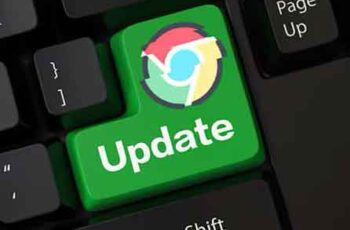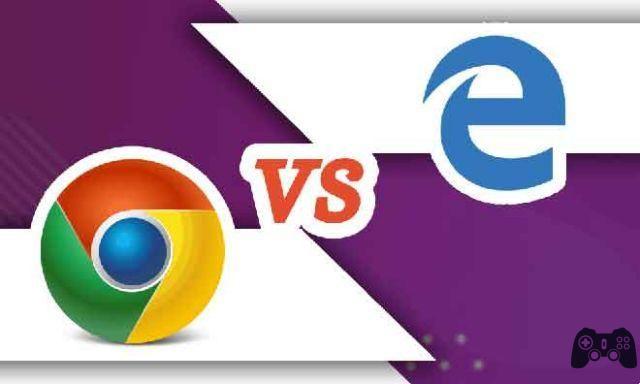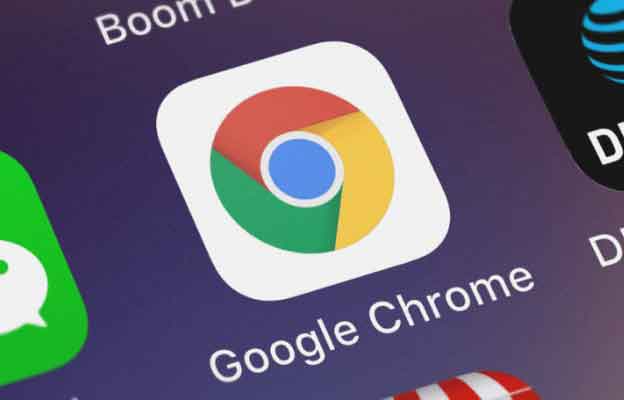
Google publishes frequent updates to improve the performance, stability and security of its Chrome browser. Major version updates also improve the browsing experience with new features and hidden experimental flags.
Chrome updates to the latest version within days of release to make sure you don't miss a thing. But you can also manually initiate an update to start working faster.
However, if the Windows version of Chrome doesn't update itself, crashes during a manual update, or shows an error code, here are several likely reasons:
- Network-related problems
- Compatibility issues
- Google update service configured incorrectly
- Malicious extensions and browser hijackers
- Corrupted or missing files
In most cases, you can identify the problem behind a failed Chrome update by going to the About Chrome screen (open the menu Other and select Guide > Information on Google Chrome ).
For example, an error message with codes 3, 11, 7 e 12 indicates complications with network connectivity.
The solutions below can fix most of the update issues in Google Chrome on Windows. It's best to close and restart your browser as you go through each solution.
Quit Chrome and restart your computer
Just restarting your PC can fix many minor bugs and glitches that appear randomly and prevent Chrome from updating. So do it now and try another Chrome update before moving on to the rest of the fixes.
Run the built-in network troubleshooters
Let's say a failed Chrome update point on a faulty internet connection or access point. If so, running the network troubleshooters built into Windows can help you diagnose and fix when Chrome won't update.
- Open the menu Start and select Settings.
- Select Update and security.
- Switch to the tab Resolution of the problems.
- Select Additional troubleshooting.
- Run the troubleshooter Internet connection.
- Follow the recommended tips to fix the problems found by the troubleshooter.
- Scroll down the screen Additional troubleshooting tools and run the incoming connections e network cards.
Skip the DNS cache
An outdated Domain Name System (DNS) cache prevents Chrome from connecting to Google's update servers. Deleting it should help fix it.
- Awards Windows + X to open the Power User menu. Then, select Windows PowerShell (administrator).
- Type the following command and press Submit: ipconfig / flushdns
- Exit Windows PowerShell.
Release and renew the IP address on Windows
If you are having internet connectivity issues on Chrome, try resetting the IP address on your computer.
1. Awards Windows + X and select Windows PowerShell (administrator).
2. Run the following commands one after the other:
ipconfig / release
ipconfig / renew
3. Exit Windows PowerShell.
Reset your router and network settings
If Chrome continues to have problems connecting or downloading from Google's update servers, try resetting the router. If this fails, you need to reset the network settings in Windows.
Disable or reconfigure compatibility mode
If you've configured Chrome to run in compatibility mode for Windows XP or Windows Vista, you can't update your browser as Google no longer supports both operating systems. Disabling compatibility mode (or selecting Windows 7 or later) can help solve the problem.
1. Right-click on the desktop shortcut of Google Chrome and select Property.
Let's say you're not using a desktop shortcut, open File Explorer and go to Local disk (C :) > Programs > Google > Chrome > Application. Then, right-click on chrome.exe and select Property.
2. Switch to the tab Compatibility and deselect the option Run this program in compatibility mode for. Alternatively, select Windows 7 or a newer version of Windows.
3. Select Apply > OK per salvare I modified it.
Disable Chrome Extensions
Extensions help boost functionality in Chrome, but they can also create conflicts and prevent the browser from updating. Try disabling them before attempting another update.
To do this, open the menu Extensions (located in the upper right corner of the screen) and select Manage extensions. Then, turn off the switches next to each active extension.
Check for malicious software
Failed Chrome updates can also result from malicious extensions, browser hijackers, and other forms of malicious software.
To help you deal with it, Chrome comes with a malware scanner built into the browser itself. Open the menu Other Chrome and go to Settings > Restore and clean > Clean up computer to run it.
If Chrome can detect and remove malicious software, run a system-wide anti-malware scan using Windows Security or a third-party Malware Removal utility.
Look around the firewall settings
If you are using a third-party antimalware utility with a built-in firewall, open its configuration panel and make sure that Google Chrome e Google Installer ( GoogleUpdate.exe ) have permissions to connect to the Internet.
You also need to make sure that you have not restricted access to the following websites:
- tools.google.com
- dl.google.com
Alternatively, it may be useful to disable any third-party antimalware utilities running on your computer for the duration of an update.
If you only use Windows Security, check your Windows Firewall rules and settings to make sure there are no problems.
Reconfigure the Google update service
Chrome relies on a background service called Google Update Service to apply updates automatically. If it fails to do this constantly (as in, you can only update the browser manually), you need to configure the service to start along with the operating system.
- Awards Windows + R to open the Run box. Then, type services.msc and select OK to view the Services applet.
- Find and double-click the entry named Google Update Service (gupdate).
- Setting up Startup type su Automatic.
- Select Apply > OK per salvare I modified it.
- Locate and double-click Google Update Service (gupdatem) and repeat the steps 3 - 4.
- Restart the computer.
Reset Google Chrome
If the above fixes failed to fix Chrome not updating, you need to reset Chrome. This should fix any corrupt or conflicting configurations that are preventing the browser from updating.
You won't lose any personal data like bookmarks, history or passwords, but we recommend that you sync your data with a Google account (if you haven't already) as a precaution.
To reset Chrome, open the tile Settings Chrome and go to Advanced > Reset and clean > Reset all settings to their default values. Then, select Reset settings confirmation.
Reinstall Google Chrome
If resetting Chrome didn't help, you need to reinstall it from scratch. Not only does it install the latest version of the browser, but the procedure should also take care of any damaged or missing files that are preventing Chrome from updating in the future.
Since you will lose all data, you need to sync your bookmarks, passwords and settings with a Google account. So, go on Start > Settings > App and features and select Google Chrome > Uninstall.
Follow by deleting all the remaining folders from the Chrome installation in the following directory:
- Local disk (C :) > Programs > Google > Chrome
After doing that, download the Chrome installer stub or standalone installer and launch it to reinstall Google Chrome.
Update the operating system
The Windows update itself helps fix known system-related bugs that prevent Chrome from running or updating normally. If you haven't done this in a while, try applying the latest OS updates now.
- Open the menu Start i went his Settings > Update and security > Windows Update.
- Select Check for updates.
- Select Download and install to update the operating system.
Fully updated Chrome
Keeping Chrome up to date always guarantees you the best browser version, so it's worth taking the time to troubleshoot any update-related issues. However, that doesn't stop the browser from being a resource hog.
Further Reading:
- 8 solutions for when Google Chrome won't update on Android
- Chrome does not ask to save passwords - how to fix
- How to fix "err_empty_response" error
- Google Chrome doesn't load pages, 7 solutions
- How to restart Google Chrome browser






